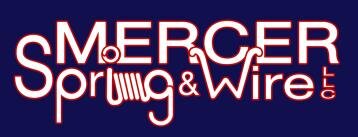Glossary of Spring Technology
Active Coils - Those coils which are free to deflect under load.
Angular Relationship of Ends - Relative position of hooks or loops of an extension spring (or
ends of a torsion spring) to each other.
Baking - Heating of electroplated springs to relieve hydrogen embrittlement.
Close Wound - Adjacent coils are touching.
Closed and Ground End - Same as Closed Ends, except the first and last coils are ground to provide a flat bearing surface.
Closed Ends - Compression spring ends with coil pitch angle reduced so they are square with the spring axis and touch the adjacent coils.
Coils Per Inch - See Pitch.
Deflection - Motion imparted to a spring by application or removal of an external load.
Elastic Limit - Maximum stress to which a material may be subjected without permanent set.
Endurance Limit - Maximum stress, at a given stress ratio, at which material will operate in a given environment for a stated number of cycles without failure.
Free Angle - Angular relationship between arms of a helical torsion spring which is not under load.
Free Length - Overall length of a spring which is not under load.
Heat Setting - A process to prerelax a spring in order to improve stress relaxation resistance in service.
Helical Springs - Springs made of bar stock or wire coiled into a helical form. This category includes compression, extension and torsion springs.
Hooks - Open loops or ends of extension springs.
Initial Tension - A force that tends to keep coils of a closewound extension spring closed and which must be overcome before the coils start to open.
Loops - Formed ends with minimal gaps at the ends of extension springs.
Mean Diameter - The average diameter of the mass of spring material, equal to one-half the sum of the outside and inside diameters. In a helical spring, this is the equivalent to the outside diameter minus one wire diameter.
Modulus in Shear or Torsion - (Modulus of Rigidity G) Coefficient of stiffness used for compression and extension springs.
Modulus in Tension or Bending - (Young's Modulus E) Coefficient of stiffness used for torsion or flat springs.
Natural Frequency - Lowest inherent rate of free vibration of a spring vibrating between its own ends.
Patenting - The process of heating carbon steel above its critical temperature and cooling at a controlled rate to achieve a fine pearlitic microstructure.
Pitch - Distance from center to center of wire in adjacent coils in an open-wound spring.
Plain Ends - End coils of a helical spring having a constant pitch and ends not squared.
Plain Ends, Ground Same as Plain Ends, except wire ends are ground square with the axis.
Rate - Spring gradient, or change in load per unit of deflection.
Residual Stress - Stress mechanically induced by such means as set removal, shot-peening, cold working, or forming. It may be beneficial or not, depending on the spring application.
Set - Permanent change of length, height or position after a spring is stressed beyond material's elastic limit.
Set Removal - An operation which causes a permanent loss of length or height due to spring deflection.
Shot-Peening - Blasting the surfaces of spring material with steel or glass pellets to induce compressive stresses that improve fatigue life.
Slenderness Ratio - Ratio of spring length to mean diameter L/D in helical springs.
Solid Height - Length of a compression spring when deflected under sufficient load to bring all adjacent coils into contact - no additional deflection is possible.
Spiral Springs - Springs formed from flat strip or wire wound in the form of a spiral, loaded by torque about an axis normal to the plane of the spiral.
Spring Index - Ratio of mean diameter to wire diameter.
Squared and Ground Ends - See Closed and Ground Ends.
Squared Ends - See Closed Ends.
Squareness - Angular deviation, between the axis of a compression spring in a free state and a line normal to the end planes.
Stress Range - Difference in operating stresses at minimum and maximum loads.
Stress Relief - A low temperature heat treatment given springs to relieve residual stresses produced by prior cold forming.
Torque - See Moment
Total Number of Coils - The sum of the number of active and inactive coils in a spring body.
Bibliographical References
Johnson, Leonard, G., The Statistical Treatment of Fatigue Experiments. New York: Elsevier Publishing Co., 1964.
Little, R. E. and E. H. Jebe., Statistical Design of Fatigue Experiments. New York: John Wiley & Sons, 1975.
Wahl, A. M., Mechanical Springs, 2nd ed. New York: McGraw-Hill, 1963.
Berry, W. R., Spring Design: A Practical Treatment. London: Emmot & Co., 1961.
Almen, J. 0. and A. Laszlo., "The Uniform Section Disc Spring:” A.S.M.E Transactions, vol. 58, no. 4, (May 1936), pp. 305 - 314.
Blake, A., Design of Curved Members for Machines. New York: Industrial Press, 1966.
Bisshopp, K. E. and D. C. Drucker., "Large Deflections of Cantilever Beams," Quarterly of
Applied Mathematics, vol. 3, no. 3, (1945), p. 272.
Maker, J. H., "Steel Springs:” Metals Handbook. 9th ed. Metals Park: ASM, vol. 1, (1978), pp. 283-313.
Design and Manufacture of Volute Springs. New York: SAE, 1945.
Peterson, R. E., Stress Concentration Factors. New York: John Wiley & Sons, (1974), p. 231.
Maier, Karl, W., "Dynamic Loading of Compression Springs,"Product Engineering, (January 1954), pp. 162-167. "Dynamic Loading of Compression Springs," (March 1955), pp. 162-72.
"Surge Waves in Compression Springs:” (August 1957), pp. 167-174.
